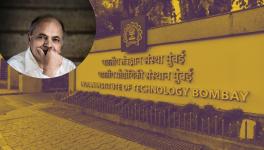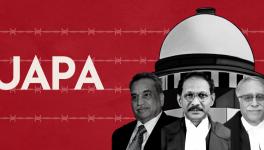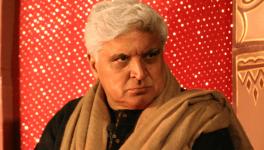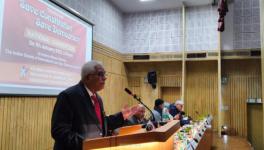What is Regulation for TV is Censorship for Digital Platforms

Image Courtesy: The Hans India
In October, a three-judge bench of the Supreme Court headed by Chief Justice of India SA Bobde heard a public interest litigation filed by lawyers Shashank Shekhar Jha, Apurv Arhatiya and Manju Jaitley. Their petition sought an autonomous body to regulate Over the Top or OTT digital streaming platforms. The other judges on the bench were justices AS Bopanna and V Ramasubramanian.
The PIL said that though the government was “facing heat” from the public and judiciary to fill gaps in the regulation of OTT platforms, yet its departments had done nothing significant to that end. Initial hearings did not seem to be going in favour of the petitioners, but then the Supreme Court directed the Ministry of Information and Broadcasting (MIB) and the Internet and Mobile Association of India (IAMAI) to respond to it.
On 9 November, the Cabinet Secretariat notified that films and audio-visual programmes released by online platforms, and news and current affairs content on websites, now were under the watch of the MIB. The notification triggered censorship concerns and fears for the survival of OTT as a business model, but at the same time, the government’s move was quite anticipated. It had said in October 2019 that it would list what is ‘forbidden’ on OTT platforms such as Netflix and Amazon. Then in August this year, Sudarshan TV launched the trailer of a programme on “UPSC jihad”, which faced tremendous criticism. Several petitions were filed in the Supreme Court and Delhi High Court seeking a stay on the telecast. While the Supreme Court dismissed the petition saying it cannot ban what had not been aired, the Delhi High Court stayed the telecast until its next hearing. The MIB sent the channel a show-cause notice and said, on 11 September, that it was satisfied with the channel’s response and therefore it could air the programme. Sudarshan aired four episodes of its show. On 15 September, a Supreme Court bench comprising justices DY Chandrachud, Indu Malhotra and KM Joseph, in response to a petition filed by advocate Firoz Iqbal Khan, stayed the show and called it an attempt to “vilify a community”. The bench said it was not censoring the media, but there must be a mechanism for media to self-regulate. Solicitor General of India Tushar Mehta, appearing on behalf of the MIB, opposed any regulation of media citing freedom of expression and press freedom. Yet, he later submitted an affidavit suggesting that the court should appoint an amicus or committee to regulate digital media “because there lies the venomous content which initiates disharmony within the society”.
The affidavit said that unlike print and TV, there is no regulatory body to oversee digital content. He also said that since digital media has wide reach (due to smartphones) therefore, it is more important to set up a regulatory institution for it.
In September, 15 OTT operators signed a new self-regulatory code including best practices, but one of the petitioners who had sought regulation of OTT platforms, Shekhar Jha, told a media outlet that this code was not in the same format as suggested by the central government. “Self-regulatory mechanisms cannot work for OTTs,” he claimed, favouring instead an independent body to monitor online content. So far, attempts to regulate digital media have not succeeded in India. In April 2018, the MIB led by Union Minister Smriti Irani issued a circular that said the press acceleration of journalists would be cancelled if they are found generating or propagating fake news. When the move was criticised, the circular was withdrawn the next day. A few days later, the ministry announced a committee to recommend a framework to regulate digital media. This committee was disbanded by the government itself and Rajyavardhan Singh Rathore replaced Irani as the new minister of MIB. The ministry never disclosed what aspects of “digital media” would fall under regulatory purview, but it is evident that they will range from monitoring content to investment decisions of digital entrepreneurs to regulating the overall functioning of digital media ventures. It is also possible that the regulations will be in line with the “program code” of the Cable Television Networks (Regulation) Act, 1995.
The ministry advised digital media stakeholders to form a self-regulatory body, along the lines of the Press Council of India for print media and the News Broadcaster’s Association for electronic media. The Allocation of Business Rules Act, 1961 was amended to bring digital content-streaming on OTT and online news/current affairs under the MIB. Earlier, they were administered by the Ministry of Electronics and Information Technology and fell under the purview of the IT Act, 2007.
On 16 November (National Press Day) the MIB issued a public notice clarifying the structure of digital media that has to comply with the foreign direct investment (FDI) policies of the government of India. The notice derives its origins from a central government decision of 18 September 2019 under which it permitted 26% FDI for entities engaged in uploading or streaming of news and current affairs. On 16 October, the Department for Promotion of Industry and Industrial trade broadly classified digital media into three categories in terms of FDI: less than 26%, 26% and more than 26%. The MIB said that ventures that get less than 26% and more than 26% FDI must submit certain documents within a month, detailing the company and its shareholding partners and their names and addresses.
Those who get FDI of more than 26% must also meet the FDI cap within a year. These moves will provide the Centre with all the necessary financial data of companies in this sector and a clear idea of the economic aspects, aspirations and dynamics of content providers. Therefore, two of the most important aspects of digital media—content and finances—have been covered by the MIB, giving the Centre a hold over the base of these media institutions. The first direct impact of capping FDI at 26% was seen in the closure of Huffpost India on 24 November as it became impossible for BuzzFeed, which owns Huffpost, to operate in India given the new FDI regulations.
The change in administrative authority to the MIB is quite probably a prelude to the government laying down the rules on OTT platforms. Section 5 of the Cable Television Act of 1955 mentions that anything transmitted through cable operators must comply with the program code. It contains an exhaustive list of don’ts for whatever is transmitted through cable. What it overlooks is the one basic difference between electronic and digital media—the technology that runs both. Though the programme code is related to content, yet content on the internet, a different kind of medium, also needs a different kind of consideration. Television is a broadcast medium while the internet is all about private viewing.
The programme code deals with multiple subjects such as how women are depicted, child pornography, criticism of friendly countries, and so on. Such codes already form a base to scrutinise the content of films, which are looked into by the CBFC (also known as the “censor” board), set up under the Cinematograph Act, 1952. The first clause of the code talks about content that “offends against good taste or decency”. But taste and decency in a country as diverse as India can have many variations. Categorising taste into “good” or “bad” is a colonial-era hangover: over-generalising taste absolutely disregards the multiple traditions that are recognised by the Indian Constitution. This is important considering that on social media we already see a range of contrasting views being expressed by individuals. In such a scenario, classifying taste will create chaos and imply losses instead of profits to those in the business of digital media or digital news.
Also, cable TV is a mostly universal medium, whereas digital content can be tailored to every device at any moment in time. What one views on the internet is fundamentally an individual’s choice but programmes aired on TV are capsules that are “broadcast” or telecast on fixed timings to all viewers. So, the programme code contains “timing regulations” for programmes that are telecast, which is a situation that cannot be related to digital media.
So far, stakeholders in the digital media have not raised their grievances over this matter. This could be because the regulations still have not been published by the MIB. Yet, the media has extensively covered the topic in its reportage. MK Venu of TheWire told The Hindu newspaper recently that there is “no clarity on what they [the government] mean by digital media”. He said the government talks about digital media and digital aggregators in the same breath though they are different things. “Are they looking at licensing, are they looking at entry barriers or are they looking at curbing digital media? We still don’t know,” he said. Unlike the two unsuccessful attempts to regulate digital media in early 2018, the regulation of digital spaces is generating relatively less volatility at the moment. This could also be because it is the Supreme Court which has intervened in the matter, or maybe prior knowledge of eventual regulation has the players keeping mum.
Fundamental rights mean little if they are accompanied with a deluge of restrictions. Stricter stipulations on artistic freedom could be imposed given the “viewer control” that comes into play with digital content—though such a regulatory injunction is yet to be seen. Self-regulation, if effective, can be a way to mitigate state-controlled censorship while transferring the control to society.
Seven out of the ten countries ranked at the top of the Press Freedom Index are in the European Union, a region that has collectively forged “self-regulatory” mechanisms for digital media. Only five out of 28 European Union nations have a regulatory framework and bodies to oversee them. A recent project on “Media Councils in the Digital Age” assessed digital media self-regulation in the European Union nations. Its report said, “...a truly independent media system requires self-regulation, for the simple reason that having government regulation would threaten the freedom of the press.” This is something Indian regulators need to keep in mind before they take their next steps.
The author is an independent journalist. The views are personal.
Get the latest reports & analysis with people's perspective on Protests, movements & deep analytical videos, discussions of the current affairs in your Telegram app. Subscribe to NewsClick's Telegram channel & get Real-Time updates on stories, as they get published on our website.
























